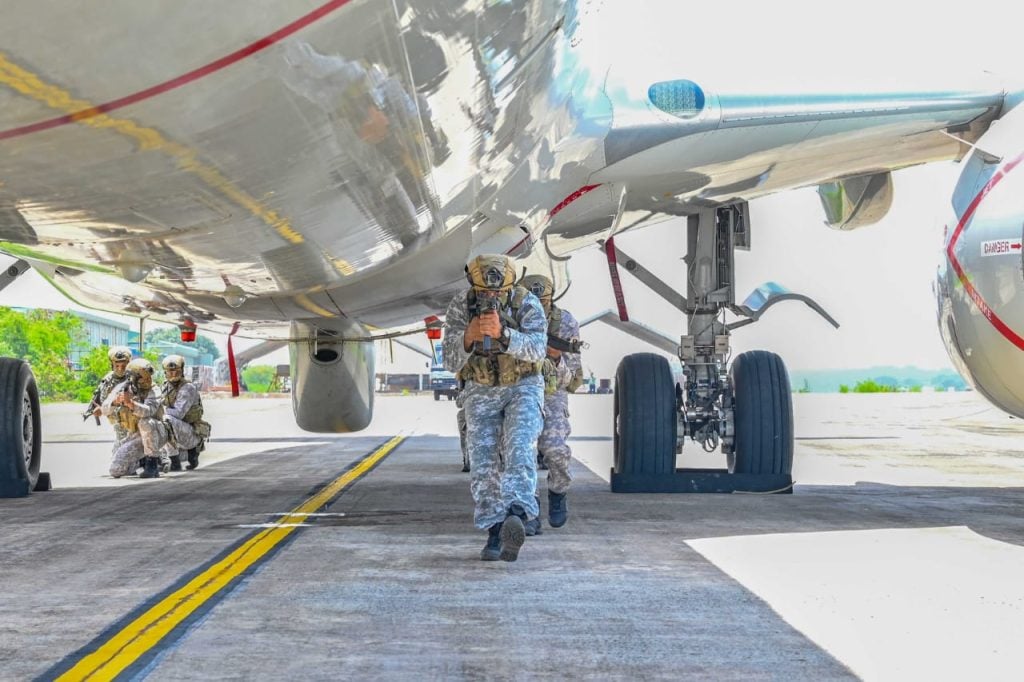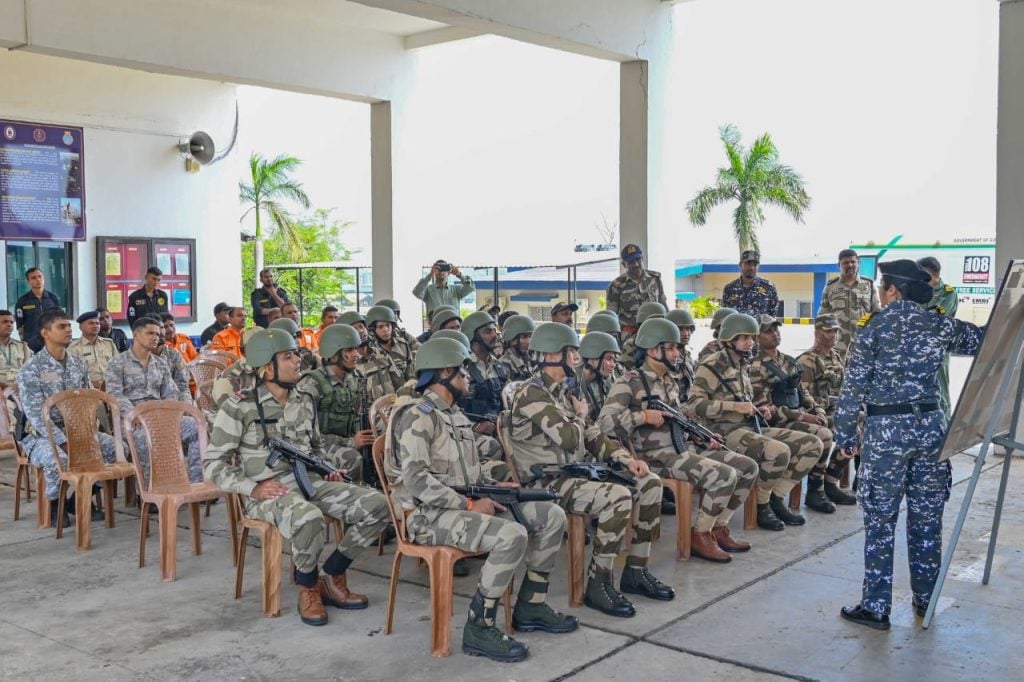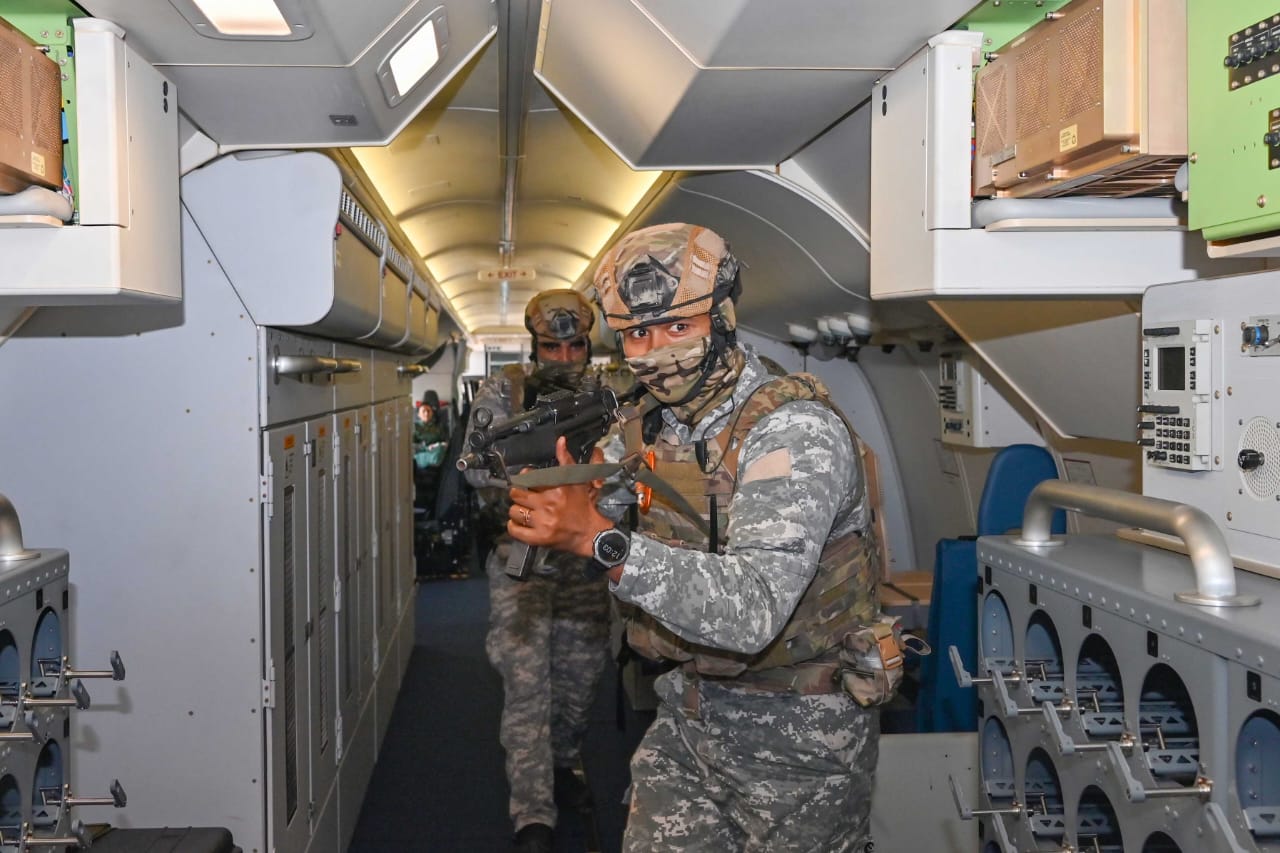The Indian Navy successfully conducted its annual anti-hijack drill on June 7 at INS Hansa, the naval airbase which also functions as Dabolim Airport. The exercise brought together elite forces and multiple agencies, highlighting India’s robust preparedness against potential aircraft hijacking threats.
The drill featured participation from the Navy’s elite Marine Commandos (MARCOS), the Central Industrial Security Force (CISF), the National Security Guard (NSG), the Airports Authority of India (AAI), Goa State Police, and representatives from civil airlines.

MARCOS, known for their intense selection process—where over 80% of candidates are filtered out during a strenuous three-day physical test followed by a week-long mental and physical endurance phase—executed the mission with trademark precision. The unit, whose training is modeled on global special forces like the US Navy SEALs and UK’s Special Boat Service, demonstrated high-level coordination with domestic security agencies.
The simulation began when the aircraft pilot requested emergency landing clearance, which was immediately approved by the Commanding Officer of INS Hansa. The Aerodrome Committee, led by the commanding officer, activated a full-scale emergency response involving bomb disposal teams, fire services, hospitals, and police forces.

The drill was conducted in accordance with the Bureau of Civil Aviation Security manual, stressing inter-agency cooperation. Previous reports, including a 2023 drill, have similarly noted the professionalism of MARCOS in executing such complex scenarios. The location’s dual-use as both a military base and a civilian airport adds strategic depth to the exercise, drawing on historical security frameworks like the FAA’s Common Strategy I to promote effective crew and agency response.
This year’s anti-hijack drill underscores India’s continued commitment to aviation security through realistic simulations, elite force readiness, and inter-agency synergy at key strategic locations.













